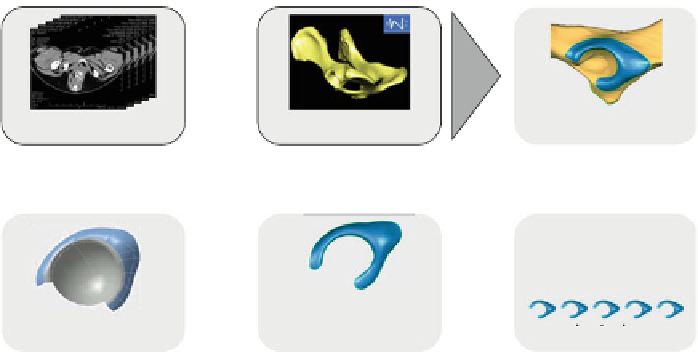Biomedical Engineering Reference
In-Depth Information
a universal acetabulumgeometry should be derived from theCT-data of real hip joints.
By means of reverse engineering an associative parametric model is generated based
on this universal geometry. The parametric composition of the produced universal
geometry finally allows the adjustment of the parametric model to the individual
geometry of the patient. For this geometrical superposition and a parameter adapta-
tion is planned. The resulting individualized geometry is used for the enlargement
step with the double acting rubber-die forming.
In this section the approach to the generation of the universal prosthesis geometry
will be introduced. Fist the general design chain of the generation of the univer-
sal geometry is presented as well as a preliminary investigation. Subsequently the
agglomerative clustering is introduced and utilized for the reproducible deduction of
the universal geometry.
4.1 General Design Chain
The method for the derivation of the universal prosthesis geometry is firstly imple-
mented by means of canine pelvis geometries. In Fig.
4
the design chain for the
deduction of the universal geometry is illustrated.
First of all, a multitude of CT examinations are executed to receive a high number
of pelvis geometries. Afterwards the collected CT Data are segmented, so that only
the geometries of the pelvis are present as 3D models. For this the Open Source
Software YaDiV 1.0 beta4 (WelfenLab, Germany) is used. Then the 3D-models of
the pelvis will be trimmed reproducible using the software Geomagic Studio 2012
(Geomagic, USA) so that only the relevant part of the acetabulum remains. These
trimmed geometries are used for the derivation of the universal geometry, realized by
CT investigation
segmentation
cut to size
derivation of
universal geometry
design of prosthesis
clustering
Fig. 4
Design chain for the derivation of the universal geometry [
20
]





















